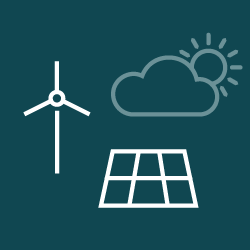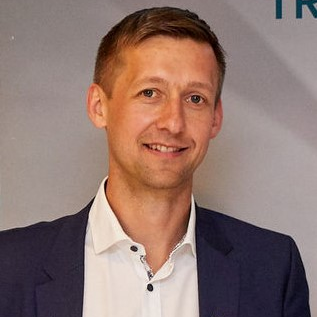Your Briefing on the energy transition
The power Brief
W-questions of a net-zero Europe
Even if it is undoubtedly highly beneficial, the energy transition comes at cost and effort for the electricity sector — but this is a necessary investment in Europe’s future. What’s new is the clarity with which we can now quantify both the price and the payoff.
Watts, weather and wallets
Our latest analysis brings together key figures that illustrate the scale of the challenge and the opportunity. Specifically, TransnetBW Adequacy 2050 study highlights how a system under stress reveals critical vul-nerabilities — and why these must be factored into planning and investment decisions today.
What is the necessary investment?
- Achieving a net-zero energy system by 2050 requires approximately 224 GW of additional cross-border capacity and 540 GW of storage, according to ENTSO-E’s TYNDP 2024.
- Total investment in electricity infrastructure — including offshore grids — will exceed €800 billion, averaging €13 billion annually over 25 years. These investments are projected to yield annual savings of up to €23 billion by reducing fuel, balancing, and redispatch costs.
- Interconnected systems enhance efficiency: Germany’s peak load occurs in winter, Italy’s in summer. Cross-border support during scarcity hours ensures security of supply without building power plants that operate only a few hours per year. Market coupling and additional interconnectors allow Europe’s most cost-effective — primarily renewable — plants to run, avoiding fuel costs.
ENTSO-E’s analysis shows a benefit-to-cost ratio of 2:1 — every euro invested in the grid cuts system costs by more than two euros. Without these investments, Europe risks missing climate targets, compromising system security, and incurring higher societal costs.
Electrification demands substantial investment, but when weighed against long-term savings — especially reduced oil and gas imports — it is a strategic move toward energy independence and economic resilience.
Who will deliver the transition?
The energy transition will be delivered by renewables, flexibility, and — critically — grids. While Europe boasts the world’s most reliable power grid, 40% of its infrastructure is over 40 years old and must be upgraded by the mid-2030s to meet the demands of a transformed energy system. The grid must evolve to:
- Integrate local and remote renewable generation
- Withstand climate extremes
- Support electrification across sectors
- Enable cross-sector integration and digitalisation
This requires not only new power lines — like those connecting offshore wind — but also smarter, more flexible, and resilient infrastructure, including large scale flexibility, such as dispatchable generation.
Yet, grid development — slower by nature — has lagged behind the accelerated rollout of renewables and fossil phase-out, leading to bottlenecks, curtailments, and rising system costs. Planning must extend beyond traditional10–15 year horizons to align with Europe’s 2050 climate goals.
The grid is not a supporting actor—it is the foundation of the energy transition.
Why is this essential?
When must we act?
Europe has made strong progress in expanding renewable energy, but electricity must be delivered where it's needed. To ensure cost-efficiency and system stability, grid development must be strategically prioritised — focusing on projects with the greatest system benefit and those that reduce costly interventions.
Renewable deployment is outpacing grid and flexibility expansion, creating bottlenecks and rising costs. Future planning must better align with feasibility and long-term goals. Phased construction timelines ease pressure on supply chains, lower procurement costs, and improve resource allocation.
In short: the time to act is now, but how we act matters. Smart sequencing and strategic planning will make the transition faster, cheaper, and more resilient.
Where must this happen?
Across all of Europe. European interconnectivity and market coupling lays the groundwork for a more efficient energy system. Stronger interconnections across borders reduce costs and risks for everyone. Our findings show potential annual savings of up to 18 billion € for Europe in 2050.
What happens under stress?
Our study Adequacy 2050 shows what’s at stake. In scenarios with extreme weather and limited consumer flexibility following matters could happen:
What are the next steps?
To ensure the energy transition is both resilient and financially efficient, Europe must act on three fronts:
1. Make Weather Resilience a Planning Baseline
Annual wind production in Germany alone can fluctuate by +/- 15%, primarily due to natural year-to-year weather variability in the wind patterns, reshaping grid needs. Ignoring this variability could lead to €26 billion/year in additional system costs in whole EU – mainly through emergency imports. Therefore, energy system planning must move beyond average weather assumptions and also consider extreme meteorological years as a baseline for infra-structure, flexibility, and investment decisions.

2. Unlock Flexibility with Targeted Incentives
Price-responsive households and electric vehicles can reduce EU-wide system costs by up to €11 billion/year. But this depends on dynamic tariffs, smart meters, and access to new flexibility products. Tools such as Redispatch 3.0 and hybrid tenders are already on the table — what’s needed now is political prioritisation.

3. Additional measures to enable financing and affordability
Grid investments are essential but require robust financial frameworks. To unlock the necessary immense capital, Europe must strengthen regulatory conditions to ensure grid expansion remains competitive with other investments. This includes reversing the downward trend in regulatory interest rates — especially in Germany — and securing guarantees from public institutions to reduce financing risks.
Innovative instruments such as blended finance and targeted EU support should be deployed swiftly. At the same time, cost-efficiency must be maximized through smarter planning, optimized use of existing infrastructure, and realistic assumptions about electrification timelines. Political targets must align with what is feasible to ensure affordability and delivery.

What’s needed now is bold, coordinated action — because a resilient grid is not just greener, it’s smarter, more cost-effective, and the foundation of Europe’s competitive future
Publications
Your contacts


More about us
- Overview
Find out which topics TransnetBW is promoting in the field of energy policy.
- Grid expansion
Well-developed networks for a successful energy transition.
- Market-design and flexibilities
Rethinking electricity market design – activating flexibilities.
- Regulation
Regulation for the energy transition.
- Cost-efficient energy transition
Energy transition with vision – sustainable, secure, affordable.
- Downloads
Our statements, positions and other contributions.